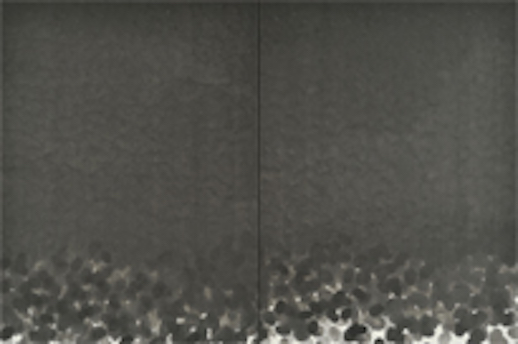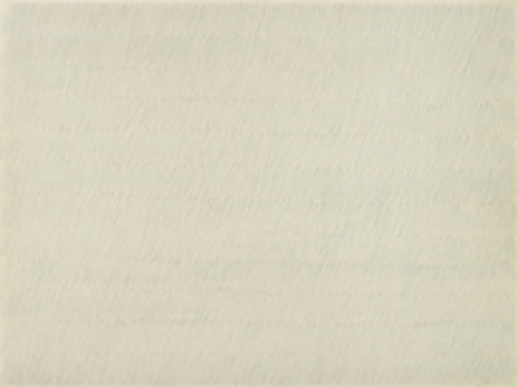Rhythm in Monochrome – Korean Abstract Painting
It is so hard in criticism to define what is relatively new in art and then place it in the chronology of art movements while avoiding subsequent labels. It is understandable how an abstract Asian movement in the 1970s could be aesthetically wrapped up as an Asian echo of American Abstract Expressionism. Enter abstract Korea’s abstract Dansaekhwa movement, a literal translation of “monochrome painting,” which arose from completely different circumstances to become a sensation in the art world thanks to a series of essays and shows. The current exhibition “Rhythm in Monochrome: Korean Abstract Painting” at Tokyo Opera City Art Gallery through December 24 falls in line with a series of shows introduced by galleries in Japan since 1975 that have more or less come to define the curation of the movement. Korean museums have also had success emphasizing the movement’s “Korean-ness.” The Japanese curation helped to define this notion in particular, thanks to Soetsu Yanagi, who created the association between Korea and the color off-white. Japanese collectors and gallerists saw the movement as a reminder of the importance of keeping one’s roots, as most of the Korean artists never left to learn in the West like most major Japanese artists have. The Korean artists themselves were cautious of such “Korean-ness” being stereotyped as the single definition of their work. Now finally the West has caught on, due in part to art historians whose writings have struck a chord with the public rather than through the promotions of art collectors and gallerists, which is usually the case.

Painter Park Seo-Bo has defined Dansaekhwa’s three essential elements as: “The absence of an identifiable figure behind the work; repetition of action; and materiality.” The show at Tokyo Opera City features pieces from the majority of the artists offering an overall impression of these three essential elements. “Materiality” is perhaps the most crucial aspect. Most of the work is performed on hanji Korean paper made of the inner bark of paper mulberry, a tree native to Korea. It is available in all colors, but you will find at the show that most of the work is done in an off-white. This is a reference to Korean porcelain being an opaque, rather mysterious color. Park Seo-Bo utilized the color quite often for this precise reason. Quac In-Sik in the second, third, and fourth pieces of the show forewent hanji in favor of washi (Japanese paper), utilizing Chinese ink on top in a way that suggests Korea’s position between the two nations, expressed in a mass of gray. Another example of materiality is in the work of Ha Chong-Hyun, who used hemp as his main material. Hemp was something the US military used after the war to ration out rice. Kids of this generation were quite familiar with it and the artist chose this material intentionally, furthering the sentiment by stringing barbed wire across hemp canvases. These pieces reflect the presence of the DMZ and symbolize a de-militarization of materials common to the war and Korean psyche.
Although their paintings deal in abstraction, the political climate Dansaekhwa artists worked in must be considered. From 1963-1979, South Korea was under the regime of Park Chung-Hee, whose legacy still divides today. On one hand he advanced Capitalism, staved off Communism, and invested in the middle class. Yet he also oppressed their freedom with censorship, smashed any political opposition, and stepped on the lower class before his assassination in 1979. It was the students who most violently opposed the regime, yet most of the Dansaekhwa artists were no longer students. They came from the post-war generation a decade prior. So there is no political agenda for the movement itself, something with which critics in the 1980s found fault. To date the artists have yet to comment on this lack of political motivation, but strictly looking at the work, we can also see that they were reacting more personally to the postwar era and conditions of Koreans in general. To an extent their art would not be what it is today if they had reacted solely to the Park Chung-Hee regime.

Returning to the essential elements of Dansaekhwa, the second, “repetition of action,” should be noted at the show. The often seemingly destroyed surfaces of the works are produced by repeated action. Park Seo-Bo, for example, created lines over and over that through the paper create an elevated line. Japanese critics have related this process of repetition to that of monks in their practice repeating chants daily: a process of self-emptying. At the exhibition, try looking at the pieces initially from afar to get the whole effect of repetition, then move in closer for a sense of the materiality and structuring. The first essential element of Dansaekwha, “the absence of an identifiable figure behind the work,” is perhaps the most easily understood in that there is no single purpose in their art. The apolitical nature of the group is one aspect confirming this element.
Often the case with abstract art is that what looks easiest is actually the most difficult to perfect. The philosophical depth is only revealed when everything is considered in full. There is a lot of nuance here that critics and curators have had trouble articulating to the public, accounting for the movement’s slow recognition and adding imperative to see the show. Most of these artists are in their twilight years and may have been more recognized if they had of left Korea, but the unique characteristics of their art would have quite possibly been lost. With the exception of the perhaps the most visible figure of the movement, Lee Ufan, most of the artists remain in Korea. Critics having a history of failing to appreciate artists in their time, but they are getting it right with Dansaekwha.



